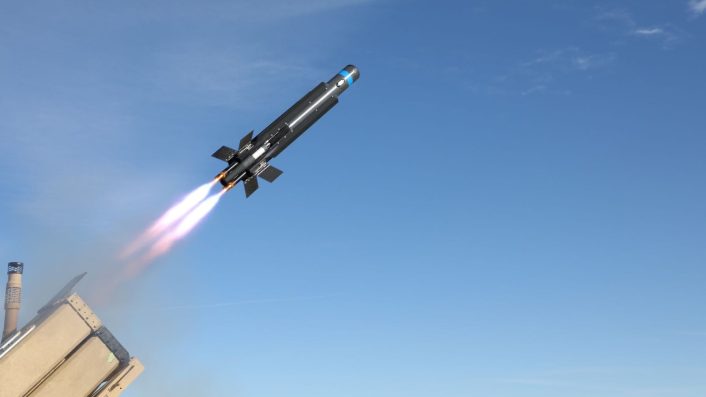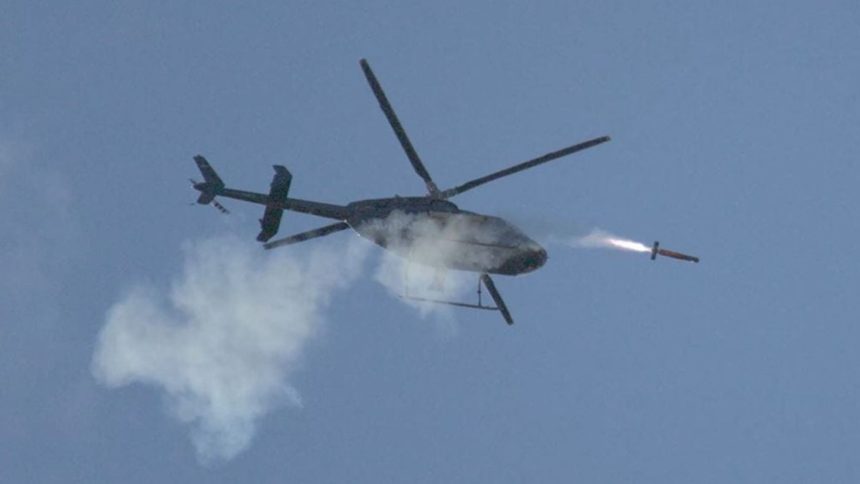The Coyote LE SR can be fired from the air, ground or sea to detect, identify, locate and defeat threats on the battlefield and perform a variety of missions.
Raytheon announced on Mar. 26, 2025, the first test fire of a new variant of the Coyote family of drones from a helicopter at the Nine Mile Training Center, Texas. Called Coyote LE SR, this is the latest in a long line of UAS (Unmanned Aerial Systems) produced by Raytheon and which has been around for the last eight years.
Falling within the broader LE (Launched Effects) concept, the Block 2 versions of Coyote have been tested by the company since 2019 as a counter-drone system. Basically, they can be defined as drone-killing drones.
While the earlier versions had essentially only counter-UAS capabilities, the Coyote LE SR now also offers “reconnaissance, surveillance and target acquisition, electronic warfare, precision strike, and communications.” It will see more tests in 2025, according to the company.
📰 NEWS: Raytheon launches new Coyote variant from a helicopter for the first time during a recent test at Nine Mile Training Center.
Details: https://t.co/6eCF9zkgSy pic.twitter.com/cqWDgHb8Sc
— RTX (@RTX_News) March 26, 2025
The Coyote’s older Block 1 versions were propeller driven, fixed wing small UAS with pop-out wings and twin-tails. The Block 2s have more exquisite counter-drone capability. Based on the sole image Raytheon has released, showing a bottom view of the UAS being fired from what appears to be a Bell 407 helicopter, the Coyote LE SR also appears to be similar in shape and design to the Block 2s.
Coyote earlier versions
Almost looking like an AGM-114 Hellfire, the Coyote Block 2 and Block 2+ have four large strakes along the body, four folding tail control fins and four tubular exhausts around a larger one. In fact, the Coyote Block 2 uses four boosters for launch before switching to a small jet engine.
The Block 2 and Block 2+ variants were also featured in tests by the company at Arizona’s Yuma Proving Grounds in Feb. 2020 and Nov. 2021, with videos subsequently posted online a few months later, destroying various types of drones in spectacular explosions.
Described as a Counter-UAS system, the Coyote was paired during those tests, held by the U.S. Army IF/RCO (Integrated Fires/Rapid Capabilities Office), with the KuRFS (Ku-band Radio Frequency Sensor) radar in both fixed and mobile variants, the latter installed on a M-ATV. The complete system is known as LIDS (Low, slow, small, unmanned aircraft Integrated Defeat System), which in the mobile variant becomes M-LIDS.
NEWS: Coyote Block 2 counter-drone weapon approved for international sales. More: https://t.co/d5wCaC1pwQ pic.twitter.com/9BEpHlqYu1
— RTX (@RTX_News) March 18, 2020
Raytheon says Coyote LE variants can engage “small to large target unmanned aircraft systems at longer ranges and higher altitudes,” defeating “single drone threats as well as swarms.” As the videos of the Block 2 and Block 2+ versions show, the Coyotes explode just around the target, suggesting proximity fused-warheads.
The large explosions can likely damage a group of UAVs flying in close formation. This is especially true if they are close enough to be hit by the target UAV’s shrapnel, or if the warhead has a fragmentation effect. Raytheon says that the LE variants, beside precision strike, are capable of reconnaissance, surveillance and target acquisition, electronic warfare, precision strike and communications in “beyond line-of-sight engagements.”
Presumably, the Block 2 and Block 2+ are purely counter-drone systems, without the non-lethal, non-kinetic EW, tactical aerial reconnaissance and communications capability. The Coyote LE SR has both these additional capabilities.

Coyote LE SR
In its statement, Raytheon says the Coyote LE SR, can be fired from the “air, ground, or sea” and “detect, identify, locate and defeat threats on the battlefield” with rapid reaction times. The company did not specify the meaning of the SR suffix, or whether it is only assigned to the helicopter-launched version of the system.
“This test marked the first Coyote launch from a helicopter and is one of many demonstrations of Coyote’s capabilities, expanding upon previous successful tests,” said Raytheon in the announcement. The company also added that “Coyote LE SR uses collaborative autonomy allowing it to connect with other nearby sensors and systems to adjust its tactics and more efficiently and effectively achieve mission objectives based on real-time battlefield insights.”
Additionally, the company added that “previous variants have been used with significant success in combat as a counter-drone system; Coyote has successfully intercepted hundreds of drones.” This suggests the system has been used against hostile drones in Iraq or Syria, which has persistently faced drone threats. Army officials said that the system is deployed at 36 sites outside the U.S. and, as of late 2024, scored a total of 170 kills.

Real world applications
There are no close up images yet of the Coyote LE SR to observe any of the identifiable design features consistent with ISR and EW roles, like an EO (Electro-Optical) turret, or bulges along the body that usually serve as electronic arrays.
This therefore also raises the question about the extent of the ‘man-in-the-loop’ element within the Coyote Block 2, Block 2+ and Coyote LE SR, or if the drones are fully or semi-autonomous. We also do not have an image of the manual control console and interface, if any, and for good reason, given the need to hide this configuration from known operators of hostile drones facing U.S. forces. The real world applications in places like the Middle East, with Iran-backed militias in Syria and Iraq and the Houthis would be tremendous.
U.S. Navy MH-60R Seahawk helicopters were revealed in Jan. 2025 to have shot down Houthi drones, possibly with the APKWS (Advanced Precision Kill Weapon System) of the AGM-114 Hellfire. The Coyote LE SR adds another capability to engage the larger and sophisticated drones, and slow-moving anti-ship cruise and ballistic missiles, if acquired and installed on these helicopters.









